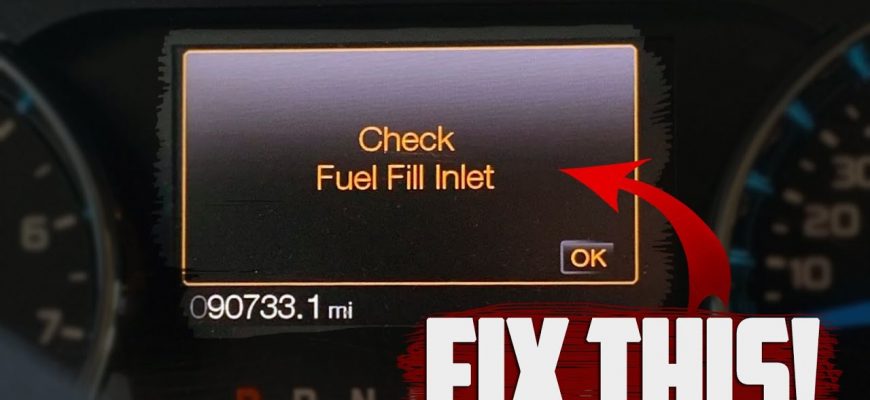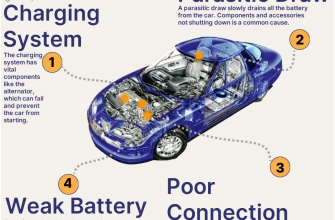When it comes to vehicle maintenance, many drivers focus on oil changes, tire rotations, and fluid checks. However, there’s one often-overlooked component that plays a vital role in ensuring your vehicle runs smoothly: the fuel fill inlet. Ignoring this small yet significant part can lead to serious issues down the road. In this article, we’ll explore the importance of checking the fuel fill inlet and provide you with a step-by-step guide on how to do it effectively.
What is the Fuel Fill Inlet?
The fuel fill inlet, commonly known as the fuel filler neck, is the opening on your vehicle where fuel is added. It connects the gas cap to the fuel tank and is designed to prevent fuel vapors from escaping into the atmosphere. This component is crucial for maintaining fuel system integrity and ensuring that your vehicle operates efficiently.
Why is Checking the Fuel Fill Inlet Important?
- Prevent Fuel Leaks: A damaged or worn fuel fill inlet can lead to leaks, which not only waste fuel but also create hazardous conditions.
- Improve Fuel Efficiency: A secure and functioning fuel inlet helps maintain proper fuel pressure, contributing to better fuel efficiency.
- Ensure Emission Control: A faulty inlet can cause vapor leaks, leading to increased emissions and potential environmental harm.
- Enhance Safety: Fuel leaks can pose fire hazards. Regular checks can help identify issues before they escalate.
How to Check Your Fuel Fill Inlet
Checking your fuel fill inlet is a straightforward process that you can perform during your regular vehicle maintenance checks. Here’s how to do it:
- Gather Your Tools: You’ll need a flashlight, a clean cloth, and possibly some basic tools to remove the gas cap if needed.
- Inspect the Gas Cap: Start by examining the gas cap for cracks, damaged threads, or a worn gasket. A tight seal is essential to prevent vapor escape.
- Check the Filler Neck: Use a flashlight to inspect the filler neck for any signs of corrosion, damage, or foreign objects that may obstruct fuel flow.
- Look for Leaks: Check around the fuel fill inlet for any signs of fuel leaks or wet spots. If you smell gasoline, this could indicate a problem.
- Clean the Area: Use a clean cloth to wipe away any dirt or debris around the fuel fill inlet. This helps maintain a good seal and prevents contamination.
- Test the Cap Seal: After inspection, securely replace the gas cap and give it a twist to ensure it’s tightly sealed.
Signs of a Problem
Be vigilant for any signs that may indicate an issue with your fuel fill inlet:
- Unusual fuel odors, especially after refueling.
- Check engine light illuminating on your dashboard.
- Reduced fuel efficiency.
- Visible fuel stains near the inlet.
When to Seek Professional Help
If you notice any of the above signs or if your inspection reveals damage to the fuel fill inlet or gas cap, it’s time to consult a professional mechanic. They can assess the damage and recommend necessary repairs or replacements.
Regularly checking your fuel fill inlet is a simple yet essential maintenance task that can save you from costly repairs and ensure your vehicle operates efficiently. By keeping this component in good condition, you not only enhance your vehicle’s performance but also contribute to a safer and cleaner environment. Make it a habit to include the fuel fill inlet check in your routine vehicle maintenance to enjoy a worry-free driving experience!
In the world of automotive care, the fuel fill inlet may not be the first component that springs to mind, but its significance cannot be overstated. Think of it as the gateway to your vehicle’s heart—the engine. Ensuring this passage is clear and functioning optimally is not just a matter of convenience; it’s a crucial step in maintaining your vehicle’s overall health. Let’s dive deeper into the intricacies of fuel fill inlet maintenance and why it deserves a spot on your vehicle care checklist.
The Anatomy of a Fuel Fill Inlet
Understanding the fuel fill inlet’s structure can help you appreciate its role better. This component typically consists of a filler neck and a gas cap, both designed to secure the fuel tank and prevent any unwanted leaks or vapor releases. The filler neck is usually made from durable materials like metal or plastic, allowing it to withstand the rigors of regular use and environmental factors.
Common Issues with Fuel Fill Inlets
Like any part of your vehicle, the fuel fill inlet is susceptible to wear and tear. Here are some common issues to watch out for:
- Corrosion: Over time, exposure to moisture and road salts can lead to rust and corrosion, especially in metal filler necks.
- Cracked or Worn Gaskets: The gasket that seals the gas cap can deteriorate, leading to potential leaks and vapor loss.
- Obstructions: Dirt, debris, or even insects can block the inlet, hindering fuel flow and causing problems during refueling.
- Gas Cap Malfunctions: A faulty gas cap can trigger the check engine light and lead to poor fuel efficiency.
Proactive Steps for Maintenance
To keep your fuel fill inlet in top condition, consider incorporating these proactive maintenance steps into your routine:
- Regular Inspections: Make it a habit to inspect the fuel fill inlet every few months, focusing on the cap and filler neck for any signs of damage.
- Replace Worn Parts: If you notice any cracks or wear, replace the gas cap or any damaged components immediately to prevent further issues.
- Keep it Clean: Periodically clean the area around the fuel fill inlet to prevent debris buildup. A clean inlet ensures that your vehicle is ready for a smooth refueling experience.
- Monitor Fuel Efficiency: Keep an eye on your fuel consumption. If you notice a sudden drop, it may indicate an issue with the fuel system, including the fill inlet.
The Bottom Line
While it may seem trivial, the fuel fill inlet is integral to your vehicle’s performance and safety. By taking the time to inspect and maintain this component, you not only ensure better fuel efficiency but also contribute to a cleaner environment by minimizing emissions. So, the next time you stop for gas, take a moment to check that everything is in order. Your vehicle—and your wallet—will thank you!










I appreciate how this article highlights often-overlooked vehicle components. It’s a reminder that every part matters for safety and efficiency.
Excellent article! I learned so much about the fuel fill inlet today, and now I feel empowered to take better care of my car.
This article really opened my eyes to the importance of the fuel fill inlet. I never thought about it before!
Great read! The step-by-step guide on checking the fuel fill inlet is super helpful. I’ll definitely be adding this to my maintenance routine.
Such an informative piece! I love how you explained everything in detail. It makes vehicle maintenance feel less daunting.
I never thought about checking the fuel fill inlet before reading this. Thank you for providing such practical advice!
This is a fantastic guide! The emphasis on safety and environmental impact really resonates with me. I’ll be more vigilant during my checks.
I had no idea that a faulty fuel fill inlet could lead to such serious issues. Thanks for sharing this crucial information!